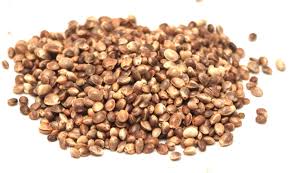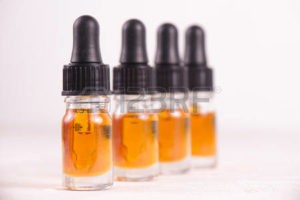- You are here:
- Home »
- Blog »
- Uncategorized »
- Take Prostate Cancer Active Surveillance a step Further
Take Prostate Cancer Active Surveillance a step Further

The use of active surveillance increased from 14.5 percent to 42.1 percent of men with low-risk prostate cancer between 2010 and 2015, said the researchers...
According to the study linked and excerpted below, low-risk prostate cancer patients are more comfortable with active surveillance (aka watchful waiting) more than ever. Once again, less is more for newly diagnosed cancer patients. I say “more comfortable” than ever for a reason.
A diagnosis of cancer is scary-
Make no mistake. A diagnosis of cancer, any cancer at any stage, is terrifying. You can read all the studies you want but if cutting out (surgically removing) the cancer makes you feel better, even if those studies document an increase in side effects like incontinence and/or impotence, you are going to go the surgical route.
I’m talking about having a prostatectomy (surgical removal of the prostate) versus active surveillance for low-risk prostate cancer.
Take active surveillance a step further-
Evidence-based non-toxic therapies cited to reduece the risk of prostate cancer is what I mean by taking active surveillance a step futher. Diet, frequent, moderate exercise, supplementation and other lifestyle therapies can further reduce your risk of prostate cancer.
As one of the “recommended reading” posts below explains, the mediterranean diet has been shown to reduce the risk of prostate cancer. Curcumin, green tea extract and many other supplements all have been shown to be cytotoxic (kill) prostate cancer. Even CBD oil can be beneficial in managing prostate cancer.
To look at active surveillance a bit differently, by taking this route after a diagnosis of early protate cancer you are pursuing a form of integrative therapy. You are integrative conventional (FDA approved) medicine with non-conventional therapies.
You will get your PSA and gleason scrores regularly. You will see your doctor regularly. You will have to get used to living with a small amount of cancer inside your body.
Your new normal-
Having lived with the real risk of relapse as well as several serious adverse events from my own aggressive conventional therapies (different cancer), I would argue that the new normal for active surveillance is a much higher quality of life than the cancer survivor living with the side effects from aggressive therapies.
Learn more-
If you have been diagnosed with prostate cancer and would like to learn more about evidence-based, non-toxic therapies scroll down the page, post a question or a comment. I will reply to you ASAP.
Thank you,
David Emerson
- Cancer Survivor
- Cancer Coach
- Director PeopleBeatingCancer
Recommended Reading:
- Ask the Cancer Coach-“Metastatic prostate cancer, gleason score of 9”
- The Better Prostate Cancer Diet- Mediterranean or Flexitarian?
- Early Prostate Cancer? Know Your Options-
Study finds upsurge in ‘active surveillance’ for low-risk prostate cancer
Active surveillance nearly tripled in men with low-risk prostate disease
“Many men with low-risk prostate cancer who most likely previously would have undergone immediate surgery or radiation are now adopting a more conservative ‘active surveillance’ strategy, according to a new study…
The use of active surveillance increased from 14.5 percent to 42.1 percent of men with low-risk prostate cancer between 2010 and 2015, said the researchers...
During that same period, the percentage of men undergoing radical prostatectomy (removal of the prostate gland) declined from 47.4 percent to 31.3 percent. The use of radiotherapy for low-risk disease dropped from 38.0 percent to 26.6 percent…
Many men with low-risk disease are able to be spared the toxicity of treatment so it’s an important discussion to have between clinicians and patients….”
National guidelines advocating conservative management rather than immediate “definitive treatment” with surgery or radiotherapy were established in 2010 for men with low-risk prostate cancer. Low-risk disease is defined as a small tumor confined to the prostate gland that is assigned a grade of 6 on the Gleason scale following a biopsy; an early pathological stage, and a low PSA (prostate-specific antigen) blood level…
“This encouraging finding suggests that clinicians are better adhering to current recommendations and guidelines for men with low-risk prostate cancer, as the use of active surveillance in appropriately selected men will reduce rates of overtreatment...
Active surveillance involves periodic follow-up tests for PSA levels, repeat biopsies, and exams by a doctor every six to 12 months…”
Use of Active Surveillance or Watchful Waiting for Low-Risk Prostate Cancer and Management Trends Across Risk Groups in the United States, 2010-2015
“Discussion– Use of AS/WW for men with low-risk localized prostate cancer increased from 2010 to 2015, becoming the most common management approach. Radical prostatectomy use declined among men with low-risk disease but increased among patients with higher-risk disease. Although increasing use of AS/WW for low-risk disease has been supported by high-level evidence and guidelines since 2010,2,3 shifting management patterns toward more radical prostatectomy in higher-risk disease and away from radiotherapy does not coincide with any new level 1 evidence or guideline changes.6 The potential downstream effects of efforts to increase AS/WW for men with low-risk disease on management of other risk groups requires further examination…”
PSA Test of 5.0- Cancer Coaching Advice?
Hi Kathy,
- frequent, moderate exercise
- nutrition and supplementation below
- no tobacco
- cut way down or stop alcohol consumption-
Bill followed the above and below and his PSA dropped to 2.0 within six months. Yes, he keeps a close watch on his PSA, prostate, etc. But at this point in this life, he is willing and eager to pursue non-toxic therapies to manage his early stage PCa.
Let me know if you have any questions or comments.
David Emerson
- High-Dose Vitamin C–Patient Version (PDQ®)
http://www.cancer.gov/about-
3) Vitamin D
Vitamin D for the Management of Prostate Cancer-
http://www.ncbi.nlm.nih.gov/
4) Curcumin- (turmeric)
Chemopreventive potential of curcumin in prostate cancer
http://www.ncbi.nlm.nih.gov/
5) Grape Seed Extract-
Grape seed extract induces apoptotic death of human prostate carcinoma DU145 cells
http://carcin.oxfordjournals.
6) Ellagic Acid-
Ellagic acid inhibits migration and invasion by prostate cancer cell lines.
http://www.ncbi.nlm.nih.gov/
7) Lycopene-
Lycopene for Prevention and Treatment of Prostate Cancer
http://www.medscape.com/
8) Endocannabinoids in the Treatment of Prostate Cancer-
http://www.medicaljane.com/
9) Sweet Potato Greens-
http://carcin.oxfordjournals.
10) Bitter Melon Extract
https://www.ncbi.nlm.nih.gov/
11) Pomegranate Extracts and Cancer Prevention: Molecular and Cellular Activities



